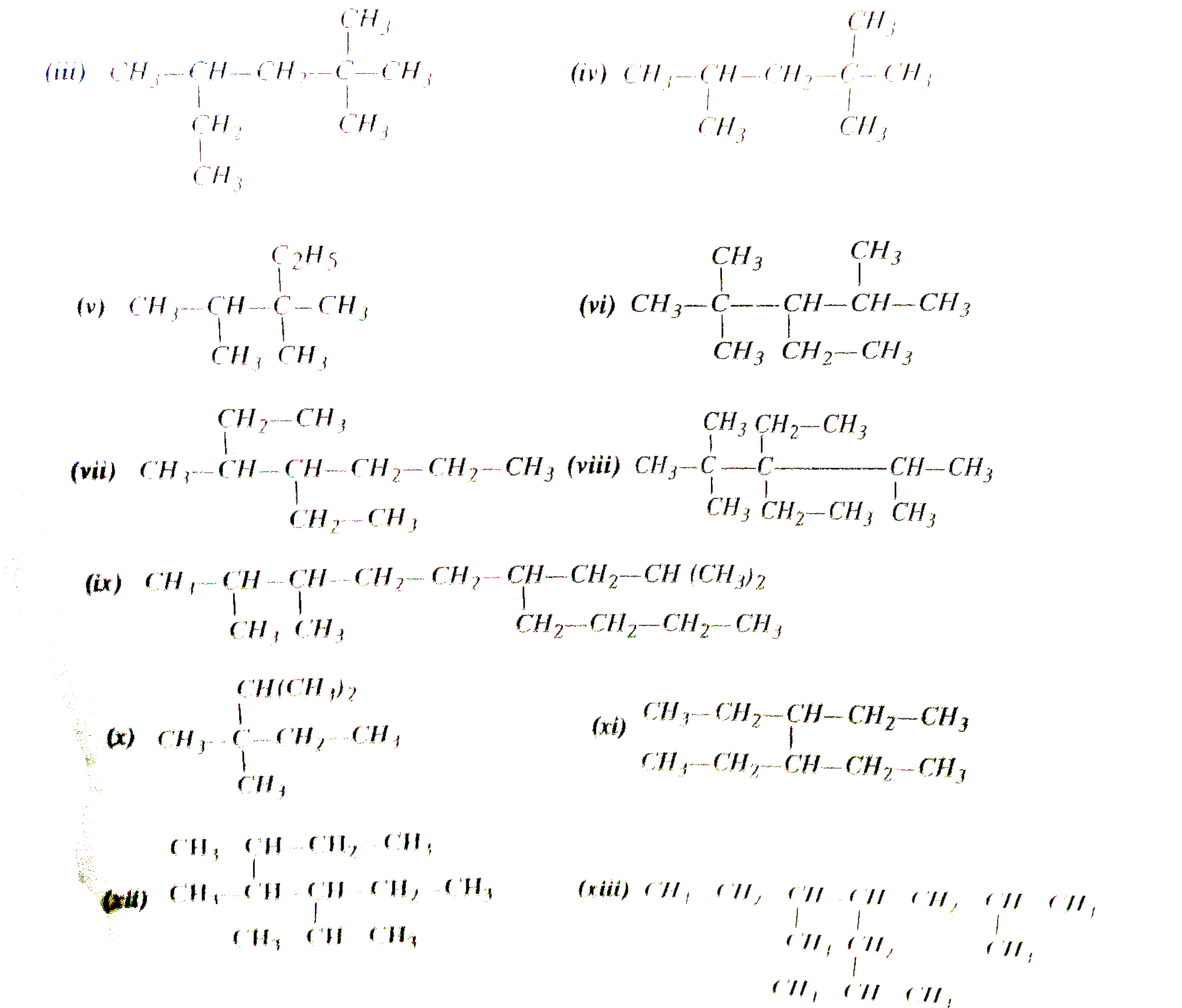Among the following four structures I to IV
I CH3 ∣C2H5−CH−C3H7
II O CH3 || |CH3−C−CH−C2H5
III H−H∣C⊕∣H
IV CH3∣C2H5−CH−C2H5 it is true that
all four are chiral compounds
I and II are chiral compounds
III is a chiral compounds
II and IV are chiral compounds
The correct Answer is:B
To determine which of the given structures (I to IV) are chiral compounds, we need to analyze each structure based on the definition of chirality. A chiral compound is one that has a carbon atom bonded to four different groups.
1. Analyze Structure I:
- Structure I has a carbon atom that is attached to four different groups:
- CH3 (methyl group)
- C2H5 (ethyl group)
- C3H7 (propyl group)
- H (hydrogen)
- Since all four groups are different, Structure I is chiral.
2. Analyze Structure II:
- Structure II has a carbon atom bonded to:
- CH3 (methyl group)
- C2H5 (ethyl group)
- C=O (carbonyl group)
- H (hydrogen)
- All four groups attached to this carbon are different, making Structure II chiral.
3. Analyze Structure III:
- Structure III has a carbon atom bonded to:
- H (hydrogen)
- CH3 (methyl group)
- C2H5 (ethyl group)
- C2H5 (another ethyl group)
- Here, two of the groups (C2H5) are the same, which means this carbon does not have four different groups. Therefore, Structure III is not chiral.
4. Analyze Structure IV:
- Structure IV has a carbon atom bonded to:
- CH3 (methyl group)
- C2H5 (ethyl group)
- C2H5 (another ethyl group)
- H (hydrogen)
- Similar to Structure III, two of the groups (C2H5) are the same. Thus, Structure IV is also not chiral.
Conclusion:
From the analysis:
- Structures I and II are chiral.
- Structures III and IV are not chiral.
Thus, the correct statement is that only Structures I and II are chiral compounds.
- Structure I has a carbon atom that is attached to four different groups:
- CH3 (methyl group)
- C2H5 (ethyl group)
- C3H7 (propyl group)
- H (hydrogen)
- Since all four groups are different, Structure I is chiral.
- Structure II has a carbon atom bonded to:
- CH3 (methyl group)
- C2H5 (ethyl group)
- C=O (carbonyl group)
- H (hydrogen)
- All four groups attached to this carbon are different, making Structure II chiral.
- Structure III has a carbon atom bonded to:
- H (hydrogen)
- CH3 (methyl group)
- C2H5 (ethyl group)
- C2H5 (another ethyl group)
- Here, two of the groups (C2H5) are the same, which means this carbon does not have four different groups. Therefore, Structure III is not chiral.
- Structure IV has a carbon atom bonded to:
- CH3 (methyl group)
- C2H5 (ethyl group)
- C2H5 (another ethyl group)
- H (hydrogen)
- Similar to Structure III, two of the groups (C2H5) are the same. Thus, Structure IV is also not chiral.
From the analysis:
- Structures I and II are chiral.
- Structures III and IV are not chiral.
Topper's Solved these Questions
- BOOK - BITSAT GUIDECHAPTER - GENERAL ORGANIC CHEMISTRYEXERCISE - BITSAT13videos
GENERAL ORGANIC CHEMISTRY
- BOOK - BITSAT GUIDECHAPTER - ELECTROCHEMISTRYEXERCISE - BITSAT Archives13videos
ELECTROCHEMISTRY
- BOOK - BITSAT GUIDECHAPTER - HALOGEN DERIVATIVES OF HYDROCARBONEXERCISE - BITST Archives10videos
HALOGEN DERIVATIVES OF HYDROCARBON
Similar Questions
Among the following four structures 1 to 4.
1C2H5−CH3∣CH−C3H73CH3−CH3∣CH−COCH32CH3COCH∣CH3−C2H54C2H5−CH3∣CH−C2H5View SolutionFor the given four structures , I to IV, which of the following is correct ?
C2H5−CH3∣CH−C3H7(I) CH3−OPC−CH3∣CH−C2H5(II)CH3−OPC−C2H5∣CH−C2H5(III) C2H5−CH3∣CH−C2H5(IV)View Solution
Knowledge Check
- Question 1 - Select One
Among the following four structures I to IV
(I) H5C2−CH3∣CH−C3H7
(II) H3C−O∣C−CH3∣CH−CH2H5
(III) H−H∣H+∣H
(IV) H5C2−CH3∣CH−C2H5
In is true thatAonly II and IV are chiral compoundsBall four are chiral compoundsConly I and II are chiral compoundsDonly IIII is a chiral compound - Question 2 - Select One
Among the following structures I to IV, it is true that:
(I)C2H5−CH3∣CH−C3H7,(II)CH3−O∣∣C−CH3∣CH−C2H5
(III)H−H∣C∣H+,(IV)C2H5−CH3∣CH−C2H5AOnly (III) is ChiralBOnly (II) and (IV) are ChiralCAll four are ChiralDOnly (I) and (II) are Chiral - Question 3 - Select One
Among the following four structures I to IV
C2H5−CH3∣CH(I)−C3H7 CH3O∣∣CCH3∣CHC2(II)H5
H−H∣∗C∣HIII C2H5−CH3∣CH(IV)−C2H5
it is ture thateAall four are chiral compoundsBonly II and IV are chiral compoundsConly III is a chiral compoundDonly I and II are chiral compounds
Write the IUPAC name of the following compound:
H3C−N∣CH3− CH3∣C∣ C2H5−CH2−CH3View SolutionWrite the IUPAC names of the following compounds
(i) CH3−CH−CH−CH3 | | C2H5 C2H5
(ii) (CH3)3CC2H5
 View Solution
View SolutionIn the reaction
CH3−C≡C−CH3(i)X−−−−−−−−→(ii)H2/ZnCH3−C∣∣O−C∣∣O−CH3 X is:View SolutionAmong the following structures I to IV :-
C2H5−CH3|CH−C3H7
(ii) CH3−O||C−CH3|CH−C2H5
(iii) H−H|C|H
(iv) C2H5−CH3|CH−C2H5View SolutionThe basic of compounds I, II, III and IV CH3NH2I,(CH3)2NHII,(CH3)3NIII,C6H5CH2NH2IV
varies in the order.View Solution

